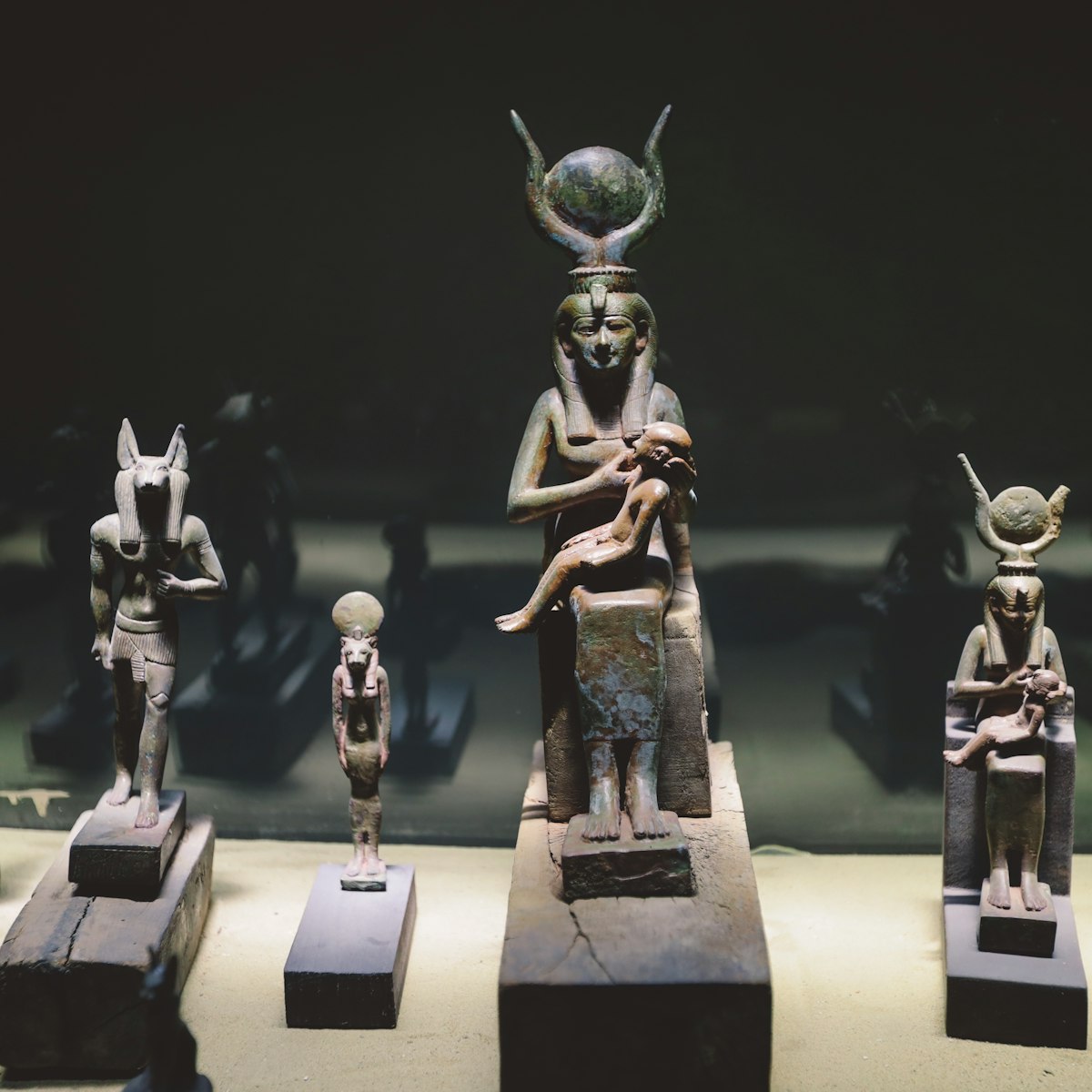The vast, slumping ruins of ancient Karanis lie 25km north of Medinat Al Fayoum, on the edge of the oasis depression, along the road to Cairo. Founded by Ptolemy II’s mercenaries in the 3rd century BC, this was once a mudbrick settlement with a population in the thousands. Today, little of the ancient city remains intact aside from half-buried, crumbling walls scattered across the sand, though Karanis is home to two well-preserved Graeco-Roman temples.
The larger and more interesting temple was built in the 1st century BC and is dedicated to two local crocodile gods, Pnepheros and Petesouchos. In front of the east entrance is a large square container – essentially a giant swimming pool for the holy crocs. Inside, niches in the wall are where crocodile mummies would’ve been stowed, and a block-like structure was the ‘house’ for the gods. The temple is also adorned with inscriptions dating from the reigns of the Roman emperors Nero, Claudius and Vespasian.
It’s a trek to the north temple, and there is far less structure here – but you can see an ancient pigeon tower, off to the east, not so different from the ones that dot Al Fayoum today. In the ruined domestic area north of the temple, you’ll find a bathtub adorned with frescoes.
The museum on-site, next to Lord Cromer’s one-time field house, holds an eclectic collection of artefacts from sites around Fayoum that cover the Pharaonic, Graeco-Roman, Coptic and Islamic eras. Just at the start of the ruins area, there's also a small open-air 'museum' of columns and stone statuary remnants rescued from Kiman Faris (ancient Crocodilopolis) which has been consumed by the modern city of Medinat Al Fayoum.
The best way to get here is by taxi as the site sign is only in Arabic and only labelled with its Arabic name 'Kom Aushim'. The driver (and anyone else you ask in Fayoum) is also more likely to know the site by this name.






